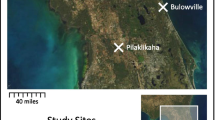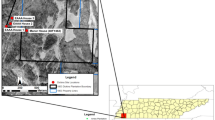Abstract
Archaeological data from the Levi Jordan plantation in Brazoria County, Texas, indicate that the African Americans who lived on this plantation participated in many activities, several of African origin, that functioned to insure this community’s survival in an increasingly oppressive outside world. Ethnographic data indicate that many descendants of the plantation’s residents, African American and European American, still live in the Brazoria area, and that these descendants continue to negotiate issues of power and control. Any public interpretation of this archaeology will necessarily deal with diverse understandings of race and history in present-day Brazoria County. This paper will describe the political and organizational strategies being employed by a team of descendants, archaeologists, and other community members to plan and implement public interpretations that are “inclusive” of the various histories and archaeologies of the plantation’s ancestors: pre- and post-emancipation African Americans as well as planters.
Similar content being viewed by others
References
Blakey, Michael E. 1987 Comments in Response to Leone, Potter, and Shackel, “Toward a Critical Archaeology.” Current Anthropology 28(3):292.
Brown, Kenneth L. 1993 A Brief History of the Levi Jordan Plantation. Paper presented at the Antebellum Texas, Brazos Style, Conference. Center for the Arts and Sciences, Lake Jackson, TX.
1995 Material Culture and Community Structure: The Slave and Tenant Community at Levi Jordan’s Plantation, 1848–1892. In Working Toward Freedom: Slave Society and Domestic Economy in the American South, edited by Larry E. Hudson, Jr., pp. 95–118. University of Rochester Press, Rochester, NY.
Brown, Kenneth L., and Doreen C. Cooper 1990 Structural Continuity in an African-American Slave and Tenant Community. Historical Archaeology 24(4):7–19.
Creighton, James A. 1975 A Narrative History of Brazoria County, Texas. Brazoria County Historical Commission, Waco, TX.
Geuss, Raymond 1981 The Idea of Critical Theory: Habermas and the Frankfurt School. Cambridge University Press, Cambridge, UK.
Genovese, Eugene D. 1976 Roll, Jordan, Roll: The World the Slaves Made. Vintage, NY.
Handsman, Russell G. 1981 Early Capitalism and the Center Village of Canaan, Connecticut: A Study of Transformations and Separations. Artifacts 9:1–21.
Handsman, Russell G., and Mark Leone 1989 Living History and Critical Archaeology and the Reconstruction of the Past. In Critical Traditions in Contemporary Archaeology, edited by Valerie Pinsky and Alison Wylie, pp. 117–135. Cambridge University Press, Cambridge, UK.
Held, David 1980 Introduction to Critical Theory: Horkheimer to Habermas. University of California Press, Berkeley.
Hill, Mary Lynne 1997 The Discipline of Social Corsets: Negotiation of the Gender Typification of the Southern Lady by Female Descendants of Levi and Sarah Stone Jordan. M.A. thesis, Department of Anthropology, University of Houston, Houston, TX. University Microfilms International, Ann Arbor, MI.
Hodder, Ian 1986 Reading the Past: Current Approaches to Interpretation in Archaeology. Cambridge University Press, Cambridge, UK.
Leone, Mark P., and Parker B. Potter, Jr. 1994 Historical Archaeology of Capitalism. Bulletin of the Society for American Archaeology 12(4): 14–15.
Leone, Mark P., Parker B. Potter, Jr., and Paul A. Shackel 1987 Toward a Critical Archaeology. Current Anthropology 28(3):283–302.
McDavid, Carol 1994a From Archaeological Context to Public Contexts: The Public Interpretation of the Archaeology of the Levi Jordan Plantation. Paper presented at the Annual Meeting of the Society for Historical Archaeology Conference on Historical and Underwater Archaeology, Vancouver, BC.
1994b From Archaeological Context to Public Contexts: The Public Interpretation of the Archaeology of the Levi Jordan Plantation. Paper presented at the Southeastern Archaeological Conference, Lexington, KY.
1995a Descendants and Decisions: Planning the Public Interpretation of the Archaeology of the Levi Jordan Plantation. Paper presented at the Southeast Region Annual Meeting of the Association of Living History Farms and Museums, Tallahassee, FL.
1995b Descendants, Collaboration, and Consensus: The Public Interpretation of the Archaeology of the Levi Jordan Plantation. Paper presented at the 28th Annual Chacmool Conference: Archaeology into the New Millennium: Public or Perish. Calgary, AB.
1995c Many Pasts and Many Presents: Collaboration in Planning the Public Interpretation of the Archaeology of the Levi Jordan Plantation. Paper presented at the Southeast Preservation Conference, Birmingham, AL.
1995d The Importance of Archaeology in the Preservation of African American Heritage: The Levi Jordan Plantation Project. Paper presented at the African Americans and Heritage Preservation Conference: Practical Strategies for Livable Communities. Texas Historical Commission, Houston.
1996 The Levi Jordan Plantation: From Archaeological Interpretation to Public Interpretation. M.A. thesis, Department of Anthropology, University of Houston, Houston, TX. University Microfilms International, Ann Arbor, MI.
Potter, Parker B., Jr. 1989 Archaeology in Public in Annapolis: An Experiment in the Application of Critical Theory to Historical Archaeology. Ph.D. dissertation, Department of Anthropology, Brown University, Providence, RI. University Microfilms International, Ann Arbor, MI.
1994 Public Archaeology inAnnapolis: A Critical Approach to History in Maryland’s Ancient City. Smithsonian Institution Press, Washington, DC.
Powers, Betsy J. 1994 From Cotton Fields to Oil Fields: Economic Development in a New South Community. Ph.D. dissertation, Department of Anthropology, University of Houston, Houston, TX. University Microfilms International, Ann Arbor, MI.
Spencer-Wood, Suzanne M. 1991 Toward a Feminist Historical Archaeology of the Construction of Gender. In The Archaeology of Gender: Proceedings of the Twenty-Second Annual Conference of the Archaeological Association of the University of Calgary:234–244. Dale Walde and Noreen D. Willows, editors. Calgary, AB.
1992a Introduction to Critiques in Historical Archaeology. Paper presented at the Annual Meeting of The Society for Historical Archaeology Conference on Historical and Underwater Archaeology, Kingston, Jamaica.
1992b Class and Ethnicity in Domestic Reform. Paper presented at the Annual Meeting of The Society for Historical Archaeology Conference on Historical and Underwater Archaeology, Kingston, Jamaica.
[1993] Toward the Further Development of Feminist Historical Archaeology. World Archaeological Bulletin 7, forthcoming.
1994 Diversity and Nineteenth-Century Domestic Reform: Relationships Among Classes and Ethnic Groups. In Those of Little Note: Gender, Race, and Class in Historical Archaeology, edited by Elizabeth M. Scott, pp. 175–208. University of Arizona Press, Tucson.
1996 Feminist Historical Archaeology and the Transformation of American Culture by Domestic Reform Movements, 1840–1925. Proceedings of the 1991 Winterthur Conference: 397–445. Lu Ann De Cunzo, and Bernard L. Herman, editors. Winterthur Museum, Wilmington, DE.
Strobel, A. 1926 The Old Plantations and Their Owners. In A History of Brazoria County, Texas, edited by T. L. Smith, pp. 15–62. Union National Bank, Houston, TX.
Taylor, Barbara 1996 Genealogical Research in the Brazoria Community. Unpublished notes and interview data. On file, Anthropology Department, University of Houston, Houston, TX.
Tilley, Christopher 1989 Archaeology as Socio-political Action in the Present. In Critical Traditions in Contemporary Archaeology, edited by Valerie Pinsky and Alison Wylie, pp. 104–116. Cambridge University Press, Cambridge, UK.
Vanderslice, Phillip 1996 Plantation’s Past Life: Excavation Slowly Uncovers History’s Scars. The Brazosport Facts, 6 June: 1A, 5A. Brazosport, TX.
Weiner, Jonathan M. 1978 Social Origins of the New South: Alabama, 1860–1885. Louisiana State University Press, Baton Rouge.
Woodward, C. Vann 1951 The Origins of the New South. Louisiana State University Press, Baton Rouge.
Wright, Cheryl 1994 I HIeard It Through the Grapevine: Oral Tradition in a Rural African American Community in Brazoria, Texas. M. A. thesis, Department of Anthropology, University of Houston, Houston, TX. University Microfilms International, Ann Arbor, MI.
Wylie, Alison 1985 Putting Shakertown Back Together. Journal of Anthropological Archaeology 4:133–147.
Author information
Authors and Affiliations
Rights and permissions
About this article
Cite this article
McDavid, C. Descendants, decisions, and power: The Public Interpretation of the archaeology of the levi jordan plantation. Hist Arch 31, 114–131 (1997). https://doi.org/10.1007/BF03374235
Published:
Issue Date:
DOI: https://doi.org/10.1007/BF03374235




